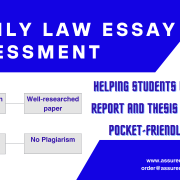What are the main challenges facing the environment today? Outline two issues from the list and suggests a possible solution for each. Choose from:loss of animal habitat, pollution, human overpopulation, over-consumption of resources, global warming. Which of the two challenges you have chosen do you think is the most likely to be solved?
In recent years, environmental issues have become the focus of attention of scholar’s problems. However many citizen still have not understood that issues these will affect them, if humans continue to destroy the environment. This essay will outline two issues namely loss of animal habitat and pollution and analyses them. Next it will give some suggestions to solve each problem and evaluate them. Firstly, this essay will introduce the situation. Then the problems are discussed. After that, some solutions will be given and I will choose one which is most likely to be solved.
There are two typical problems about environment which are Loss of animal habitats and pollution. Loss of animal habitats means that animals have no place to live. And it is a reason of extinction. On the other hand, pollution includes air pollution and water pollution. In modern society, industrial wastewater and domestic sewage discharged into the sea. Plant fuel consumption releases a lot of toxic gases, not only causing air pollution, but also leads to acid rain and haze. Many living in wealthy countries are spared the worst of these. Not so for the multitudes living in less-developed countries, who are exposed to these and more (Hill, 2004).
Climate change and land use change cause loss of animal habitat. Climate change will change weather and make plants cannot grow. Land use change means some places will be used by humans. According to Jantz (2015) said, “In the future, global biodiversity will be affected by both climate change and land use change, of which the latter is currently the main factor of species extinction”. According to research, between one-third and one-half of the land surface has been transformed by human action (Hill, 2004). Because of these problems, animals have lost their habitat and cannot find their food. There is no suitable place to continue breeding and become endangered.
In order to solve these problems, the government needs to develop more stringent laws to regulate workers involved in changing the land and solute climate problems. Besides Jantz’ (2015) stated “To reach the climate regulation targets, there must be net negative emissions of greenhouse gases by the end of the century, which is achieved by the wide spread deployment of bioenergy crops in conjunction with carbon capture and storage technology”. Besides countries need to give up some of the land used by humans returned to the animals, so that they have a place to live (Jantz, Barker, Brooks, Chini, Huang, Moore, Noel, & Hurtt, 2015). While the country should establish some animal protection areas, so that animals have their own homes
Pollution include water pollution and air pollution. SO2 is the main problem about air pollution. Hill(2004) said“SO2 is oxidized in air to sulfuric acid under moist conditions, or to sulfate in dry conditions. Both are particulates and major components of haze. Fossil-fuel-burning power plants produce about two-thirds of the SO2”. Nowadays many people and factories for convenience, they will produce the rubbish and put it into the water. The word ‘‘runoff” shows rainwater or snowmelt carried across land to water. Runoff carries about anything that water can carry such as oil, grease, dirt, rubbish, animal waste, microorganisms, and chemical pollutants. The vocabulary ‘‘watershed” is an area in which rain drains into a particular river system. Basically, all precipitation falling in a watershed flows into one water body. This means that runoff from a distance can reach and affect the flow of water. The most serious water-pollution problem is polluted runoff, a major problem in the world (Hill, 2004).
There are some solutions about pollution. The cost of dealing with toxic contaminated water is high, so the best way is to control the generation of toxic water. In generally, some form of pretreatment is required to allow the wastewater to be suitable for discharge, further processing or disposal (Harrison, 2001). Sulfur dioxide is the biggest problem in air pollution, so solution will to solve this issue. Emissions of sulfur dioxide from diesel engines led to a small but perceptible increment in sulfur dioxide alongside busy roads, but recent years have seen a very substantial reduction in the sulfur content of diesel fuel (Harrison, 2001). This shows that the factory production of diesel fuel process has been upgraded to reduce the sulfur content of diesel fuel. The world can also find some new resources to replace diesel.
Comparing loss of animal habitat and pollution, the latter is more likely to be solved. According to the study of Mantyka-pringle, Martin, Rhodes(2012) reported, both current climate and climate change appear to be key determinants of habitat loss and fragmentation effects on terrestrial biodiversity. In order to solve the loss of habitat, the weather problem is the biggest problem, it is very troublesome to deal with. The pollution only government and factory need to control the generation of toxic water and reduce the sulfur content of diesel fuel. At the same time people from the little things around to protect the environment such as driving less and riding more, do not arbitrarily discharge domestic sewage.
In conclusion, This essay Summed up the seriousness of the air pollution and water pollution, loss of animal habitat. Then there are corresponding solutions solve these problems. Next choose one of the most likely problems to be evaluated. In the future if dirty water can be controlled from the source, fuel is replaced by cleaner resources, The pollution in the near future may be solved.
Reference List.
Harrison,R.M. (Ed.). (2001). Pollution : causes, effects and control. Retrieved from http://ebookcentral.proquest.com
Hill,M.K.(2004).Understanding environmental pollution: a primer. Retrieved from http://ebookcentral.proquest.com.
Jantz,S.M.,Barker,B.,Brooks.T.M.,Chini,L.P.,Huang,Q.,Moore,R.M.,Nael,J.,&Hurtt,G.C.(2014).Furure habitat loss and extinctions driven by land-use change in biodiversity hotspots under four scenarios of climate-change mitigation: Future Habitat Loss and Extinctions. Conservation Biology,29(4),1122-1131.doi: 10.1111/cobi.12549.
Mantyka‐pringle, C. S., Martin, T. G., & Rhodes, J. R. (2012). Interactions between climate and habitat loss effects on biodiversity: a systematic review and meta‐analysis. Global Change Biology, 18(4), 1239-1252. doi:10.1111/j.1365-2486.2011.02593.x










